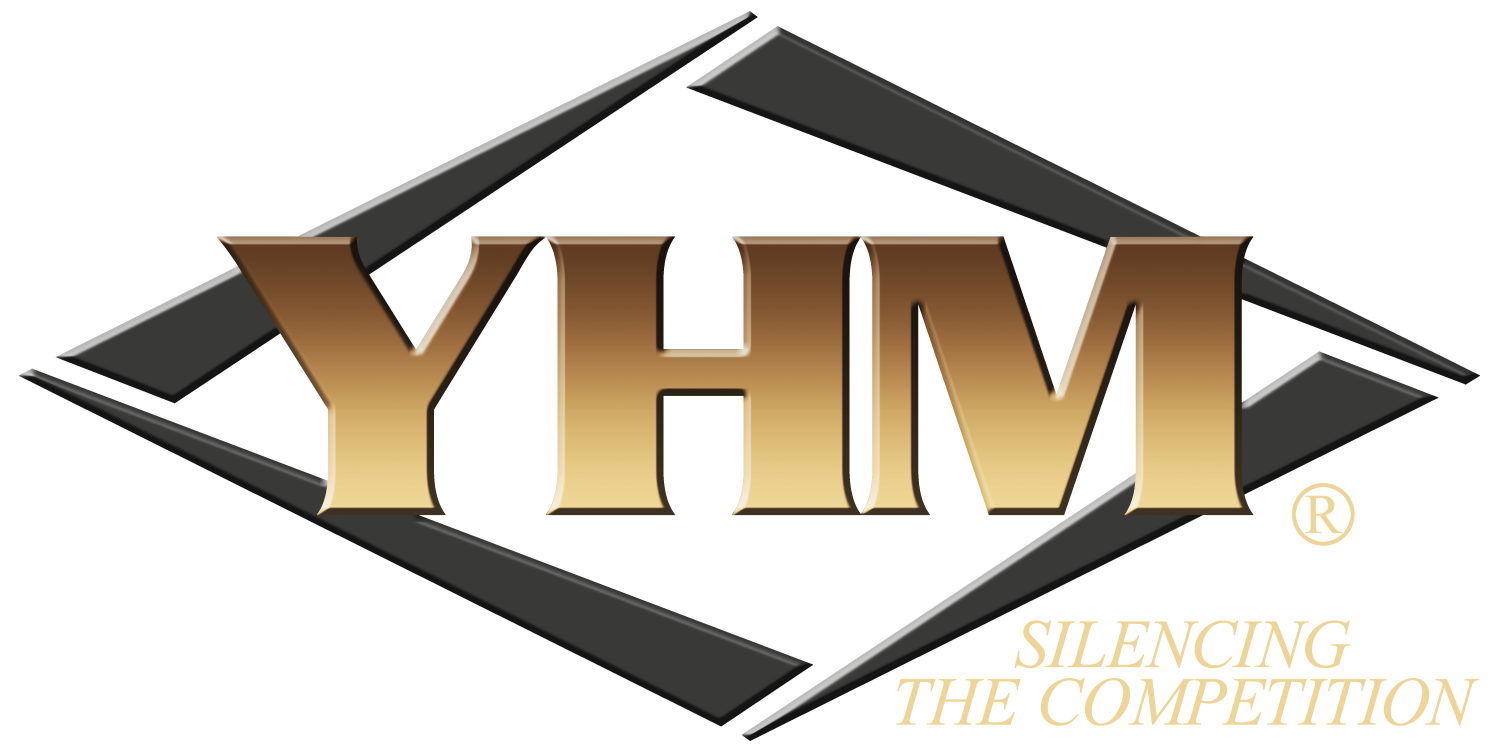Good afternoon everyone and welcome back to another edition of TFB’s Silencer Saturday brought to you by our friends at Yankee Hill Machine, manufacturers of the high performing and very affordable YHM R9 suppressor. Last week we took a look at the FN509 Compact Tactical, a pistol that was born to be suppressed. This week we are shifting gears to precision rimfire shooting and point of impact changes when adding a silencer. Is suppressor POI shift on a rimfire rifle a concern? Let’s take a look.
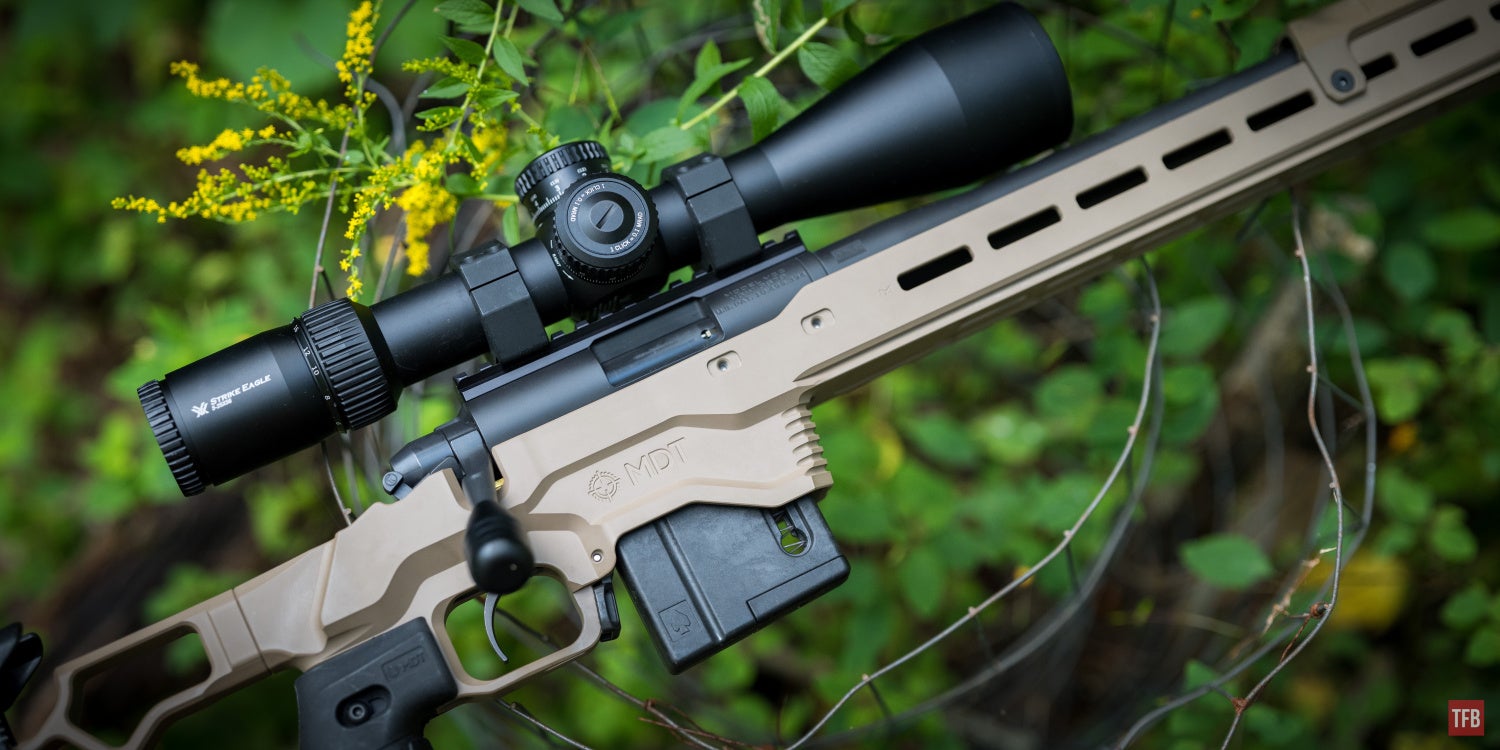
SILENCER SATURDAY #142: Precision Rimfire And Suppressor POI Shift
Today’s Silencer Saturday is a preview of TFB’s upcoming Precision Rimfire series that will focus on squeezing every ounce of performance out of the .22LR cartridge. This project has been in the works for over a year and has been made possible by the support from some great companies:
- Vudoo Gun Works – V22 Precision Rimfire barreled action
- MDT – ACC Chassis System
- Vortex Optics – Strike Eagle, Viper PST, Razor HD Riflescopes
- Timney Triggers – Remington 700 HIT Trigger
- High Desert Rifle Works – Precision Rifle Consultation
- Spuhr Optic Mounts – Rings and bases
While the precision rifle series will focus primarily on the high-end Vudoo/MDT/Vortex Razor rimfire setup, I’ll also be comparing it to some value-priced systems like the CZ455/Viper PST and the Ruger Precision Rimfire/Vortex Strike Eagle. In the meantime, don’t forget to checkout TFB’s Rimfire Report series hosted by our own Luke C.
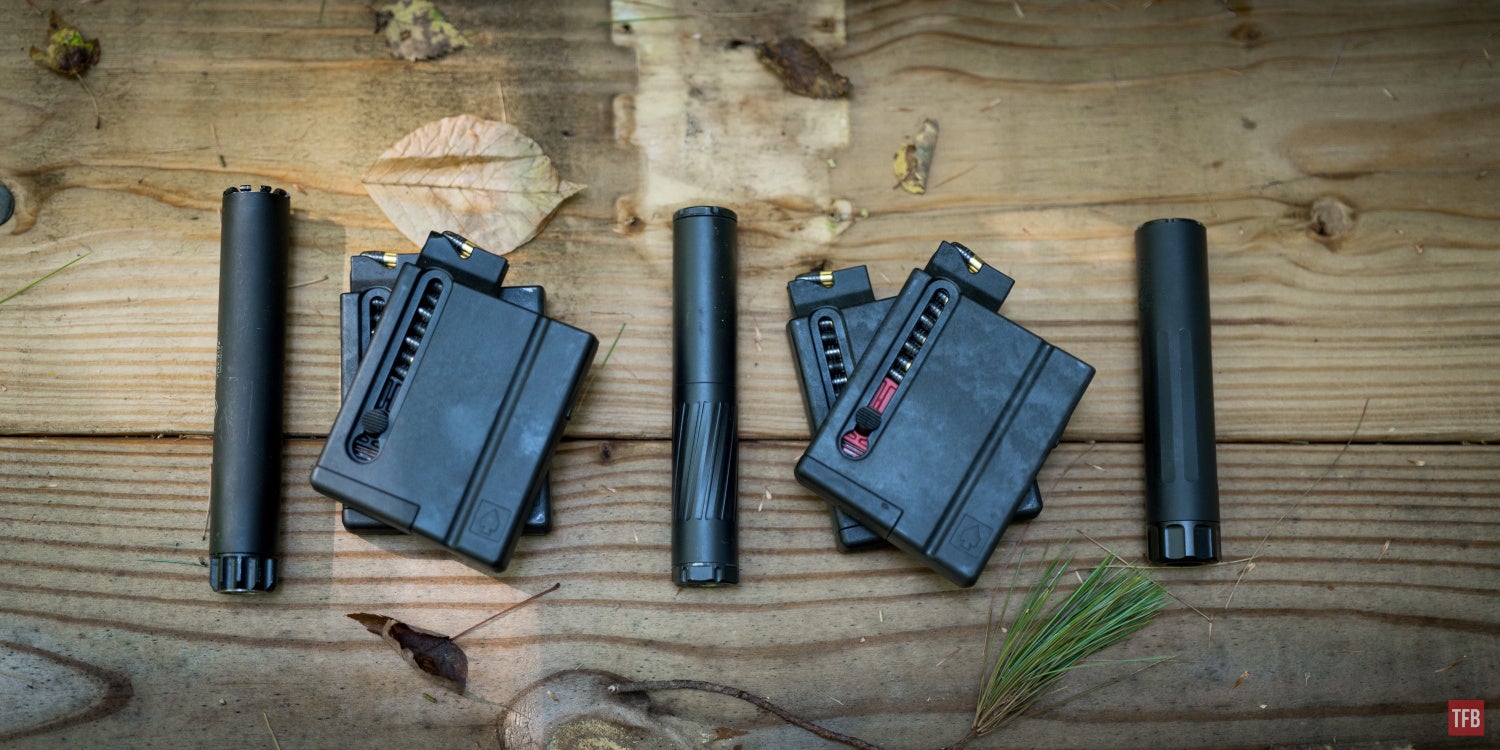
SILENCER SATURDAY #142: Precision Rimfire And Suppressor POI Shift
What is POI Shift?
After properly mounting the rifle action in a chassis or stock and an optic into rings or base and on to the receiver, the next step will be zeroing. In layman’s terms, zeroing a firearm is the process of bringing the point of aim or POA (your eye lined up with the reticle on a target) in-line with your desired point of impact or POI (the place where the bullet actually makes contact with the target). After setting that initial zero, adding anything to your system has the potential to shift the POI on a target. Adding weight to the end of a barrel can cause it to droop slightly, altering the POI even though your POA remains the same. A suppressor will add weight, but the internal geometry of baffles or the design of the endcap can also alter the bullet’s trajectory.
Let’s not forget that ammunition will play a roll in POI shift. Obviously differences in projectile weight and velocity will cause different outcomes on a target at the same distance, but different manufacturers and even different lots within the same manufacturer can potentially have different trajectories.
Understanding Suppressor POI Shift:
The obvious solution to suppressor POI shift is to dedicate a suppressor to a precision rifle and consider it part of the system like an optic or chassis. However, budgetary and logistical issues can mean that a silencer needs to be moved between hosts or certain events/locations don’t allow for the use of a can. In addition, it’s good practice to understand how your rifle performs when certain variables are altered.
Testing POI Shift:
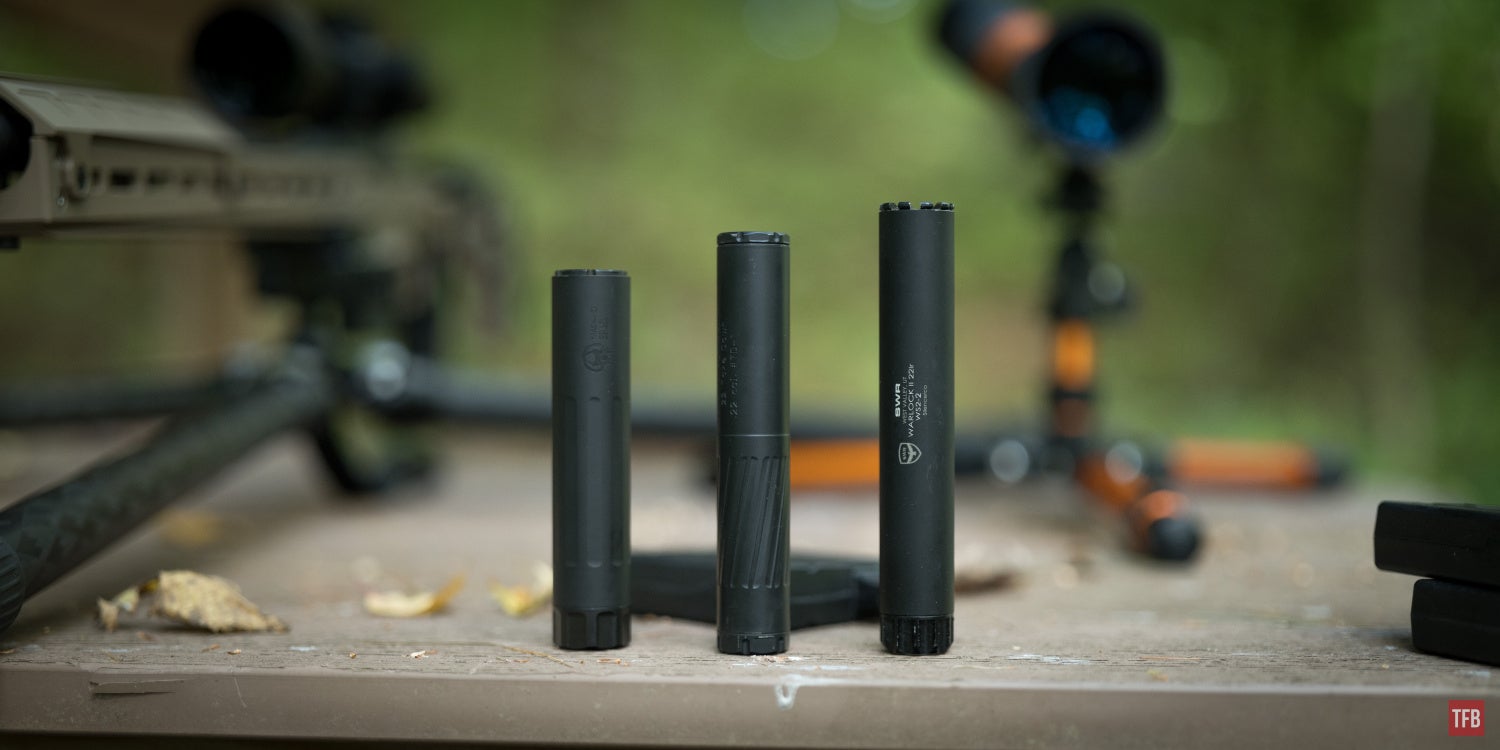
SILENCER SATURDAY #142: Precision Rimfire And Suppressor POI Shift
The concept is fairly simple – use good techniques to zero a rimfire rifle system to a desired POA/POI on a target and then, without changing any other variables, add a suppressor and follow the same techniques to shoot a group and note the shift. For this test I used three of my favorite rimfire suppressors:
- Dead Air Mask – 6.6oz – $449 MSRP
- Thunder Beast Arms Corporation 22 Take Down – 5.9oz – $395 MSRP
- SilencerCo Warlock – 3oz – $323 MSRP
Rifle Setup:
These are the first 80 shots through this new Vudoo/MDT/Vortex System and I’m still getting used to the vertical grip, stock ergonomic settings and trigger. I’ll be dialing this beast in over the course of the fall shooting season.
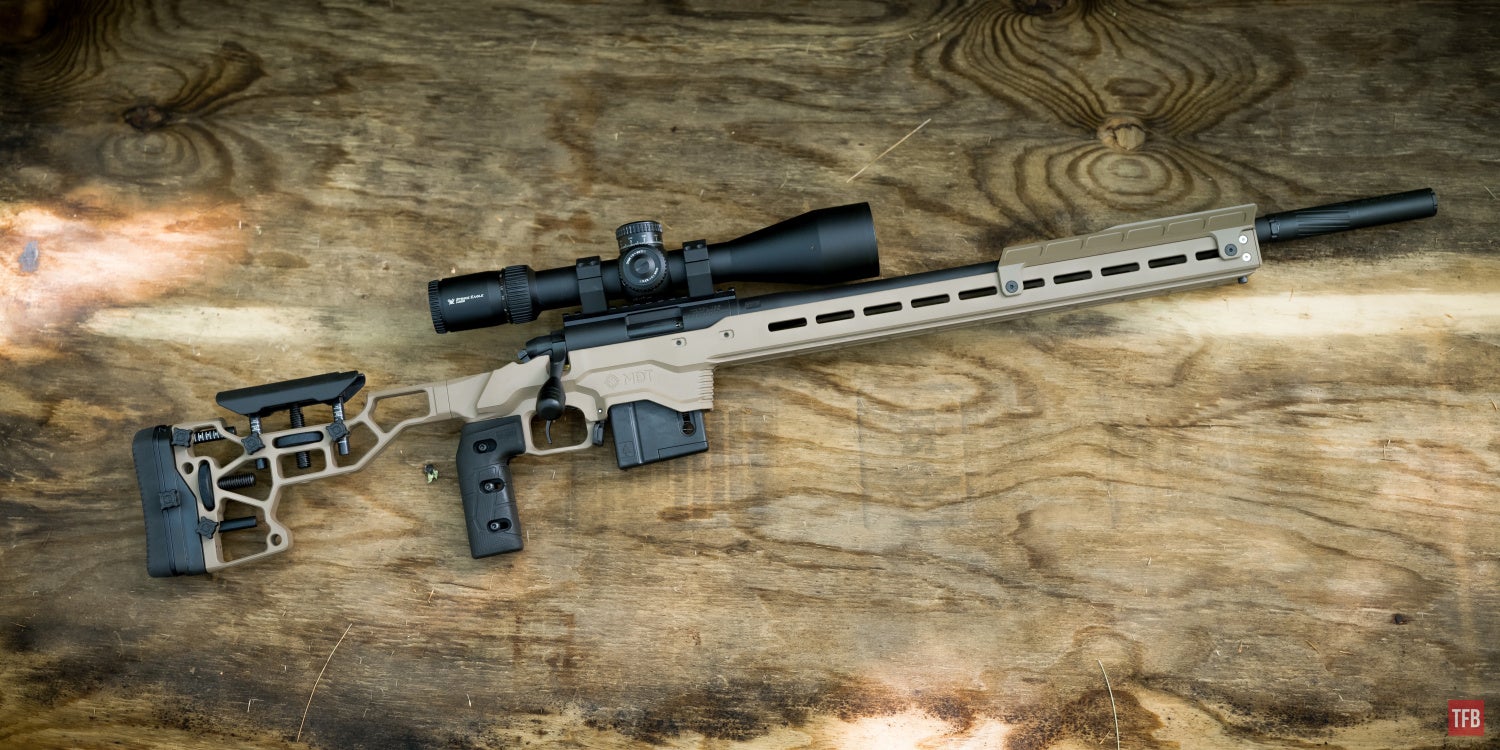
SILENCER SATURDAY #142: Precision Rimfire And Suppressor POI Shift
- Vudoo Gun Works V-22 Barreled Action – 20” Kukuri profile – $1770 MSRP
- MDT ACC Chassis FDE – $1099.95 MSRP
- Vortex Strike Eagle 5-25X FFP MRAD – $799 MSRP
- Timney Remington 700 HIT – $209 MSRP
Ammunition:
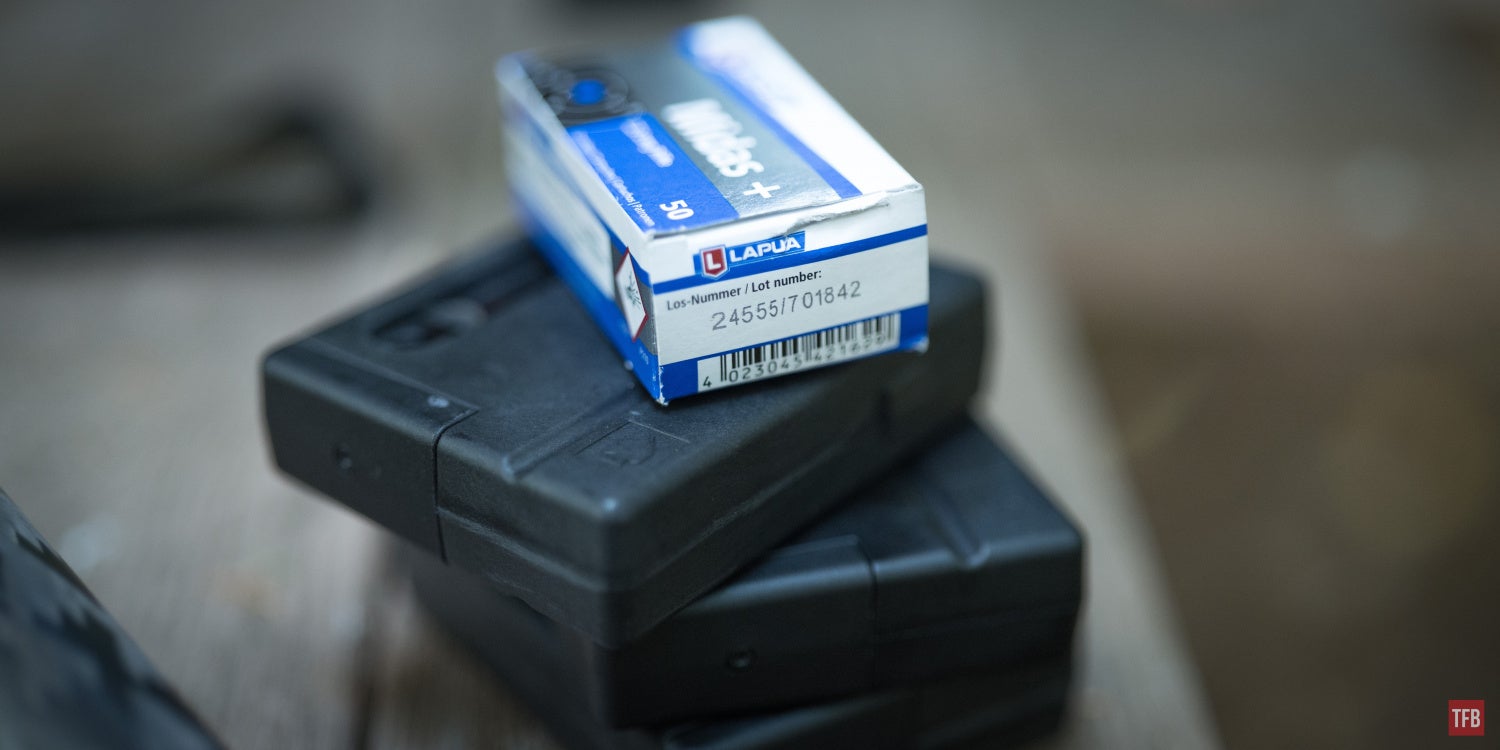
SILENCER SATURDAY #142: Precision Rimfire And Suppressor POI Shift
Environmental:
- Temp: 62 degrees Fahrenheit
- Humidity: 85%
- Distance to target: 75 yard
- 25 yard targets, each block is one MOA at 25 yards
- 10 round groups
Dead Air Mask:
Since I already had the Vudoo V-22 zeroed with the mask, I tested the POI shift in reverse – shooting with the suppressor on and then removing it and shooting it again.
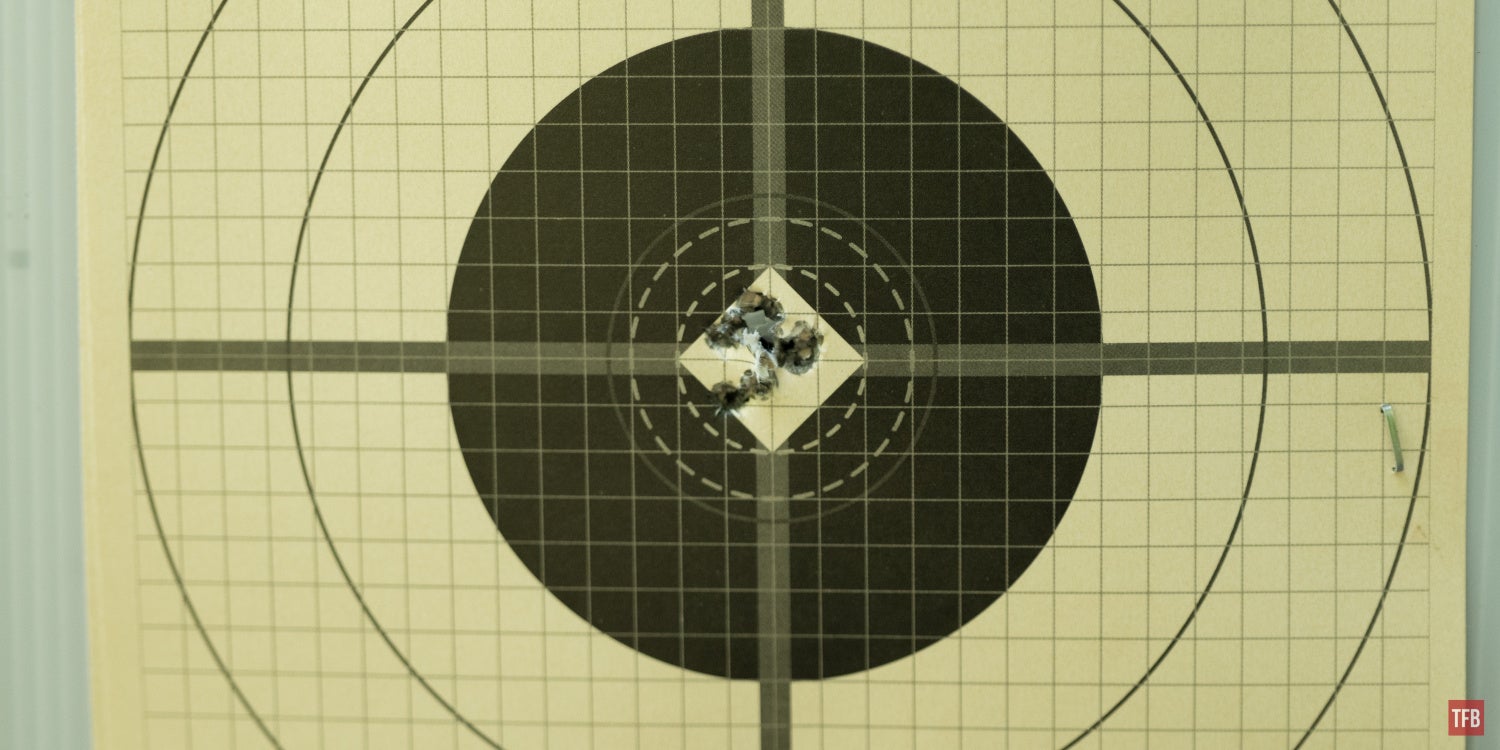
SILENCER SATURDAY #142: Precision Rimfire And Suppressor POI Shift
Removing the mask shifted the group up and to the right which should mean adding the mask would shift groups down and to the left.
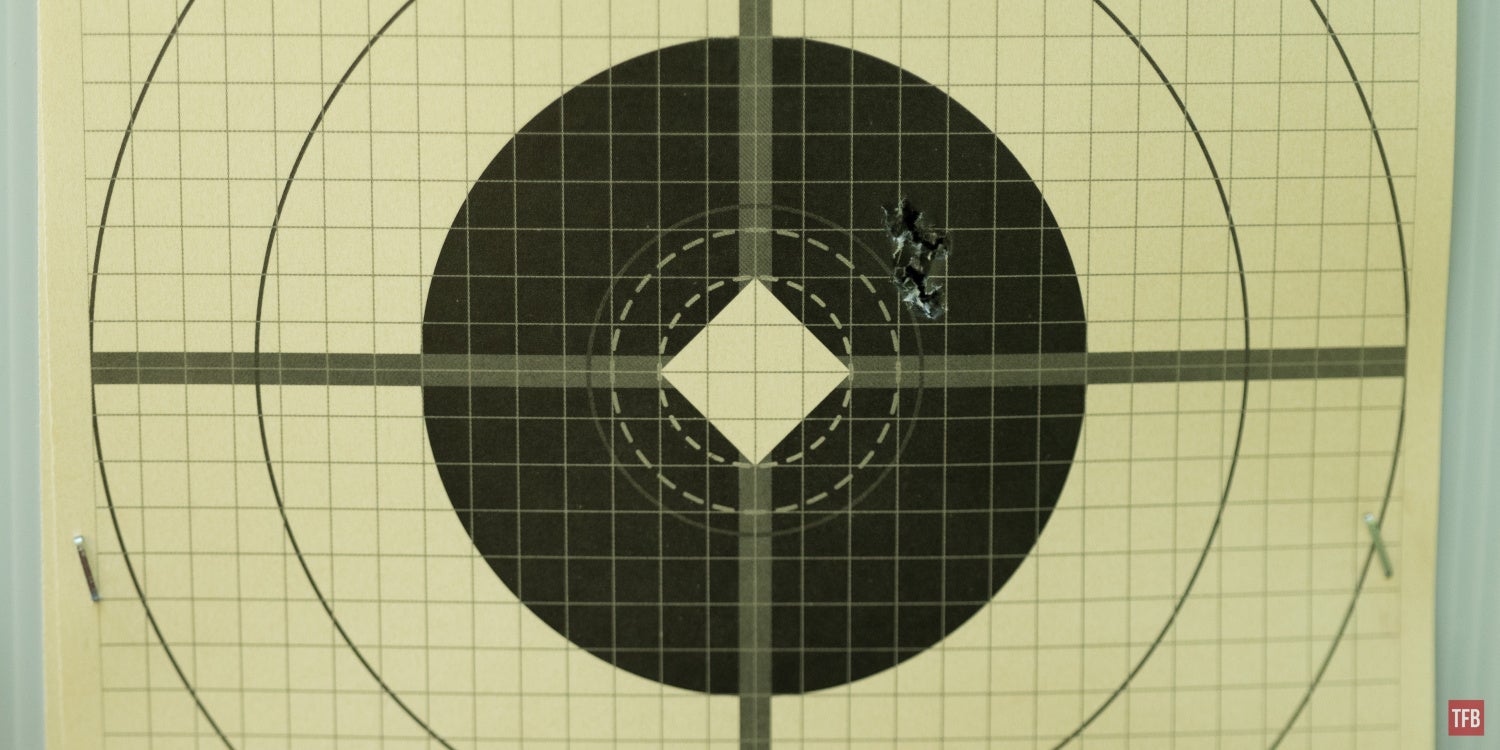
SILENCER SATURDAY #142: Precision Rimfire And Suppressor POI Shift
TBAC 22 Take Down & SilencerCo Warlock 22
For the next tests, I re-zeroed the Vudoo V-22 with a bare muzzle and then shot the TBAC 22 Take Down and SilencerCo Warlock.
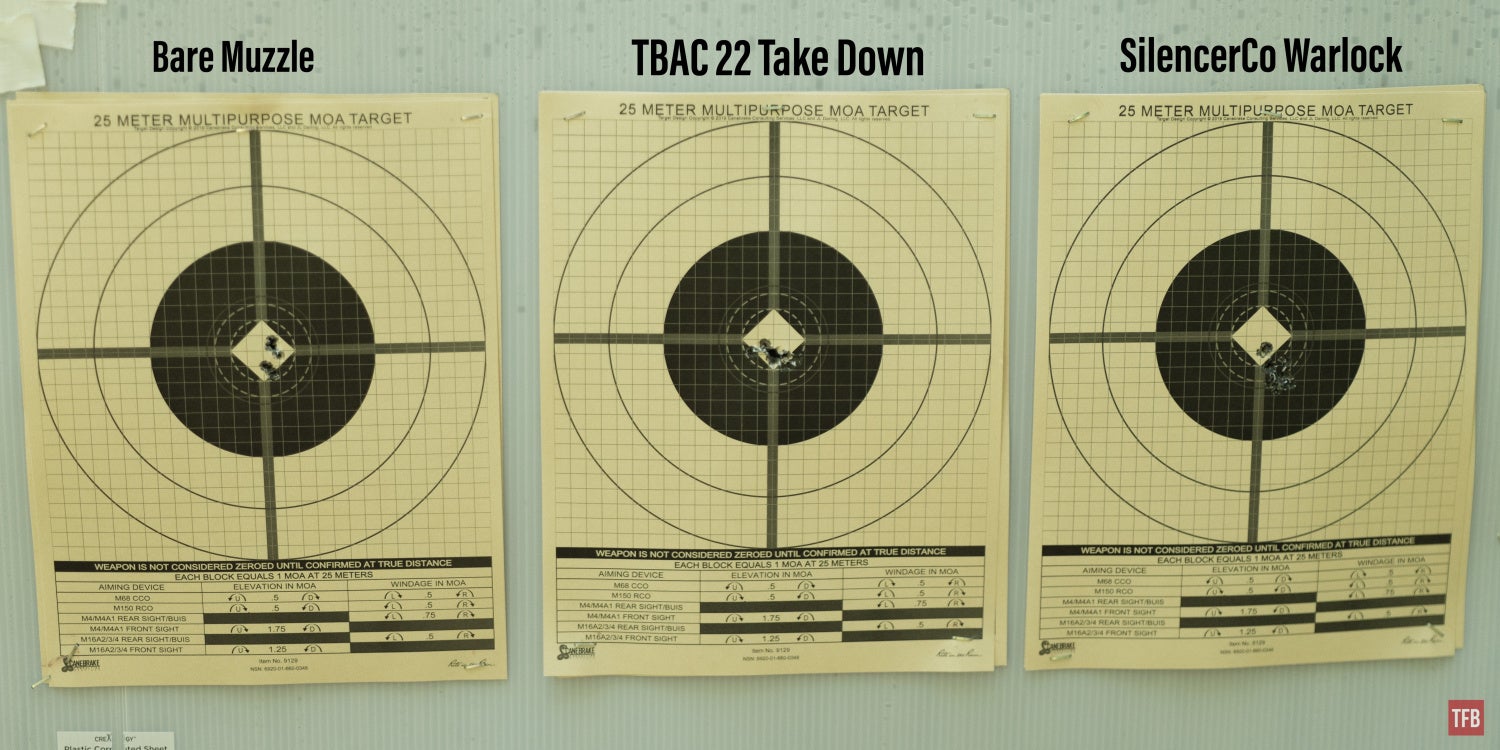
SILENCER SATURDAY #142: Precision Rimfire And Suppressor POI Shift
The 22 Take Down had minimal POI shift and the Warlock’s group moved only slightly down and to the right.
Final Thoughts:
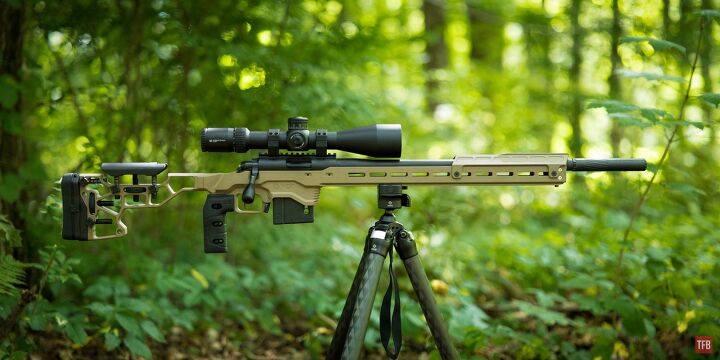
SILENCER SATURDAY #142: Precision Rimfire And Suppressor POI Shift
POI shift in of Itself has little to no bearing on the quality of a silencer. Adding, removing or modifying part of a rifle system can change the POI. It’s also worth noting that silencer POI shift can be different with different ammunition types. But Thunder Beast is known for their prowess in the precision rifle world and the 22 Take Down lives up to that reputation.
While POI changes are less like to be a concern with rimfire setups as opposed to their centerfire counterparts, my suggestion is to find a suppressor that works for your precision rimfire rifle, mount it up, zero it and dedicate it to that system. At a minimum It gives you an excuse to buy another rimfire silencer.
Have a great week everyone. Be safe, have fun and we’ll see you here next weekend for another Silencer Saturday.
Silencer Saturday is Sponsored by Yankee Hill Machine:
Buy YHM silencers and accessories at:
Silencer Shop – Hansohn BrOthers – dead eye gun supply –
Mac tactical
All YHM Products At Brownells
DEALERS: If you want your link to buy YHM suppressors included in future Silencer Saturday posts, email: silencers@thefirearmblog.com
 Your Privacy Choices
Your Privacy Choices

